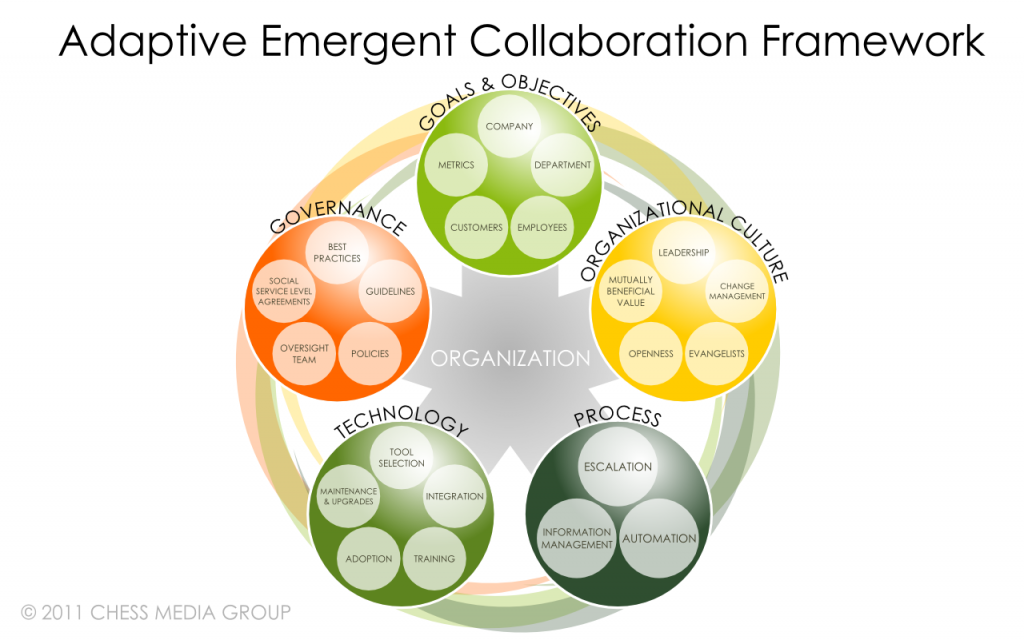It’s no secret that I’m an advocate for the voice of the employee and for the necessity of emergent collaboration in the workplace. I don’t like it when my friends or acquaintances (or anyone else for that matter) tell me that they don’t like their jobs, that their bosses hate them, that they don’t feel inspired, or that work takes up so much of their time that they can’t do anything else. I genuinely feel bad when people tell me these things, it’s sad.
However, I’m still grounded in reality (or I like to think I am). This means that while I believe that collaboration can make the world a better place I certainly realize it’s going to take more then a few evangelists and some tools to make it happen. This is actually part of what scares me because I see messages that support these approaches and I don’t think they tell the full story. Great tools and evangelists are helpful but if you recall from a few months ago Chess Media Group released a collaboration framework which looked at many other variables which organizations need to consider for successful collaboration

The fantasy is that deploying these tools will solve all of your organization’s problems. Your employees will always brilliantly come up with great ideas, everyone will become more productive, employees will be happier, and the organization will flourish. All you need to do is deploy the right tool and get some people inside of your company to talk about it.
I’m not saying some of these things can’t happen but it’s going to take a lot of work to get there. The reality is there will be obstacles along the way, not every employee will be on board with this, adoption is going to be challenging, costs could be high, and the value may not always be quantified in dollars and cents.
The point is that it’s always great to get people excited about collaboration, in fact we need more of that. But we also need to be able to look at things not just from the fantasy lens of how we want things to be but also from the reality lens of how things can and will get done.

Which is the solution to help fantasy to became reality? Are there some metrics measurements to demonstrate the real value of collaboration at the workplace? How we can show results of collaboration to stakeholders or executive managers?
Excellent question Sara!
I have a whole book coming out on collaboration strategy which covers all of these things in June. But, there are several reports which clearly look at the value of collaboration, here are a few:
https://thefutureorganization.com/collaboration-impacts-business-performance/
https://thefutureorganization.com/the-impact-of-collaboration-on-enterprise-business-performance/
http://www.mckinseyquarterly.com/The_rise_of_the_networked_enterprise_Web_20_finds_its_payday_2716
I have found that one of the most effective metrics to use is company morale or engagement, in other words, how connected and fulfilled employees feel with the work they are doing and with the company they work for.
It all starts with identifying the business problem first though.
HI Jacob,
I totally agree with your article.
In my opinion The “Magic Portion” to let this framework become a “flowchart” instead of be just a “fantasy” is “social business”.
One of the most problem in “human” organization is “who controls the information, win!”. The organization that overcome this structure will win in a “social business world”.
People are demostrating with the explosion of these “social platform” how strong is the “want” to be together with people that shares same interests.
Organization needs to move from “competion” to “coopetition”, expecially in “crisis time”.
Greetings,
maurizio